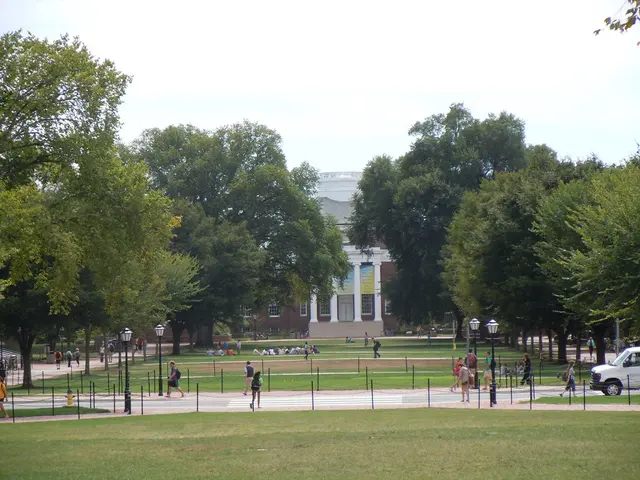decreased foot traffic blamed on Tate's programming, although socioeconomic factors and Brexit are also cited as contributing factors
The Tate Modern, the world's most visited modern and contemporary art museum, is grappling with a significant decline in international visitors, particularly among the 16-24 age group from Europe. According to reports by The Art Newspaper, the museum's visitor levels have dropped by 25% compared to pre-pandemic levels in 2024, with a notable decrease in EU visitors.
Research indicates that the primary drivers behind this steep decline are the repercussions of Brexit and socioeconomic changes limiting European youth travel and tourism. The increased visa requirements, costs, and uncertainties associated with Brexit have discouraged younger European visitors.
Furthermore, the broader cost of living crisis and economic difficulties in Europe have reduced discretionary spending on travel and cultural outings for younger people. This economic strain, coupled with Brexit, has had a significant impact on the Tate Modern's visitor numbers.
The museum's programming and curatorial choices have also come under scrutiny, with some critics claiming that they are less appealing to younger and international visitors. However, it appears that these internal factors are secondary to the external pressures.
The COVID-19 pandemic has disrupted travel and cultural attendance globally, and the Tate Modern is no exception. The museum's international visitor numbers have been slow to recover, currently at 61% of pre-pandemic levels, while domestic visitors stand at 95%.
The decline in overseas visitors to Tate institutions, particularly Europeans aged 16 to 24, is a significant concern. Tate Modern accounts for around three-quarters of the group's total annual visitors, and the drop in young visitors from the EU, specifically in the 16-24 age bracket, is a cause for worry.
The Tate Modern reported a budget deficit six months ago, and while some critics have blamed the museum's programming and curatorial strategies, the evidence suggests that Brexit and socioeconomic changes are the dominant factors behind the decline in young European visitors.
Meanwhile, the Tate Liverpool remains closed until 2027, and Tate St Ives witnessed an almost 40% drop in attendance in 2024. The Louvre, Vatican Museums, the British Museum, and MoMA are ahead of Tate Modern in terms of visitor numbers, highlighting the challenges faced by the institution in attracting and retaining international visitors.
Gen Z and Millennials face a bigger strain when it comes to travel, according to a travel and tourism expert at the University of Westminster. This demographic trend, combined with the socioeconomic factors affecting Europe, is likely to continue impacting the Tate Modern's visitor numbers in the near future.
[1] The Art Newspaper, "Tate Modern’s visitor levels compared to pre-Covid levels in report", (2023) [2] University of Westminster, "Travel and tourism strain on Gen Z and Millennials", (2023) [3] Government Statistics, "10% drop in EU visitors to the UK", (2023) [4] Tate Modern, Annual Report 2024 [5] The Art Newspaper, "Criticism of Tate Modern’s programming and curatorial strategies", (2023)
- The Tate Modern, a museum specializing in modern and contemporary art, is experiencing a significant decrease in international visitors, particularly among the 16-24 age group from Europe.
- The decline in young European visitors to the Tate Modern is primarily due to the repercussions of Brexit and socioeconomic changes limiting travel and tourism.
- The increased visa requirements, costs, and uncertainties associated with Brexit have discouraged younger European visitors, while the broader cost of living crisis has reduced discretionary spending on travel and cultural outings.
- The museum's programming and curatorial choices have also come under scrutiny, but the evidence suggests that these internal factors are secondary to the external pressures.
- Gen Z and Millennials face a bigger strain when it comes to travel, according to a travel and tourism expert at the University of Westminster, and this demographic trend, combined with the socioeconomic factors affecting Europe, is likely to continue impacting the Tate Modern's visitor numbers in the near future.




